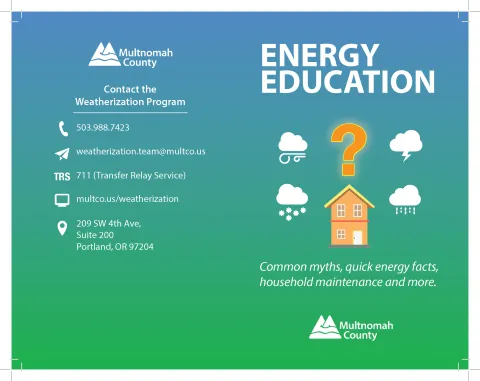
Download the brochure
Preview the Content
Common myths
New windows help save on heating bills. Windows are poor insulators regardless if they are new or old, and they feel drafty due to air movement inside the home. Other upgrades should be considered before replacing windows.
Closing heat vents saves energy. Closing a vent actually increases duct leakage to outside the living space and increases energy use from the furnace blower motor. Also, condensation and mold growth increases in winter due to lower surface temperature in rooms with closed vents.
Setting a thermostat higher heats the room faster. The air from a heater is only one temperature regardless of thermostat settings. Setting the thermostat at the desired temperature will heat the house just as fast as a higher setting without having to reset the thermostat.
Heating with a fireplace saves money. Fireplaces are designed to pull air out of the home, so more than half the heat from a fireplace goes out the chimney. Wood stoves are better than fireplaces but not by much.
The 8 principals to a healthy home
- Keep it Dry. The humidity in your home should be 35-55%. When the humidity is above 60% you are more likely to have mold grow in your home.
- Keep it Clean. Take off shoes when entering the house and use a doormat to wipe shoes when entering.
- Keep it Pest Free. Try not to leave food out to attract pests in the home.
- Keep it Safe. Avoid tripping hazards.
- Keep it Contaminant Free. Don’t use “air fresheners” or add scents to the house.
- Keep it Ventilated. Having a ventilated home can reduce the likelihood of mold growth.
- Keep it Maintained. Watch for water intrusions, wood rot, or paint chipping.
- Keep it Thermally Controlled. Maintain the lowest comfortable temperature while inspecting for mold growth.
